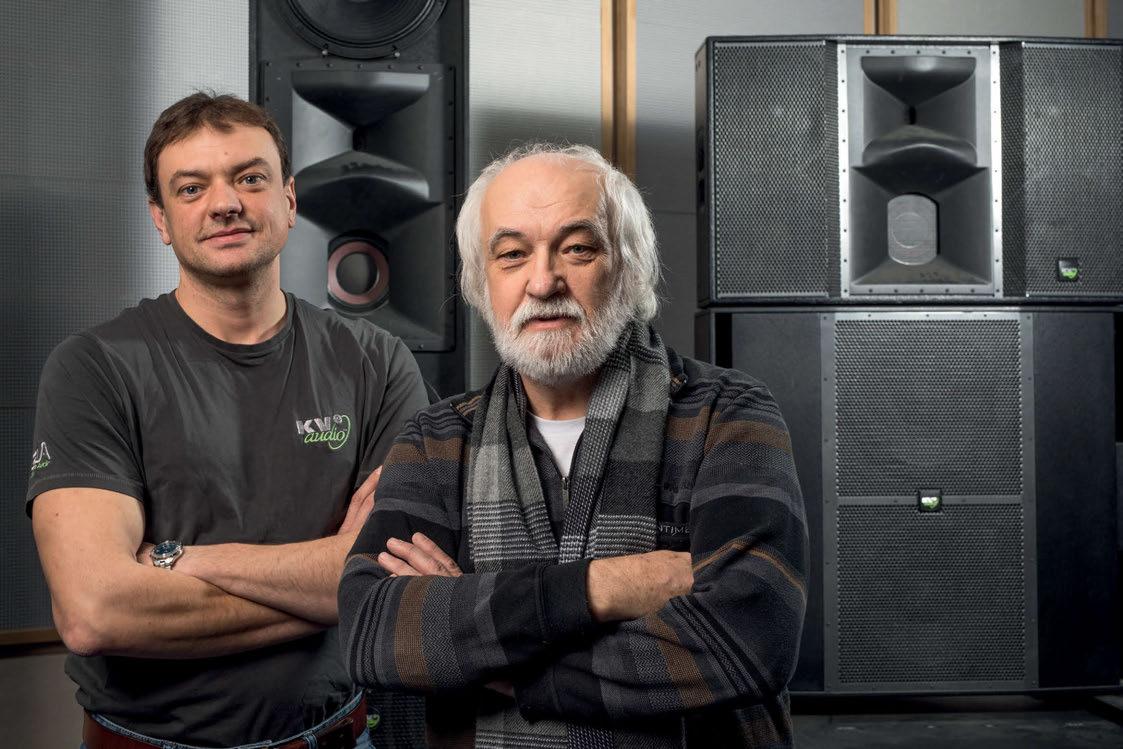
4 minute read
KV2 AUDIO OPEN DAY

KV2 AUDIO OPEN DAY
Audio manufacturer KV2 Audio welcomes a select few members of the press to its expansive facility in South Bohemia, Czech Republic, to gain an insight into the benefits of its point source technology.
Created back in 2002, KV2 was founded under one principle: sound quality is everything. Seventeen years later, as TPi met the various faces that make up the wider KV2 family, it was clear that this passion for audio perfection has not been extinguished. The manufacturer is an interesting case study in that it is not a large corporate company. Original Founder, George Krampera is still very much at the forefront of product development. Krampera’s passion for live audio dates back to his youth, when he first started experimenting with various audio components and radio amplifiers. It’s a passion that he maintained throughout his career, which saw him work with a selection of Czech brands, including RCF, before joining forces in 2002 with Marcelo Vercelli, (the V in KV2) to build the foundations that would become KV2 Audio. After parting ways with Vercelli in 2005, Krampera brought in his son, George Jr, as CEO and continued to steer the company in a way that’s very much in keeping with his ambitious vision. “The goal of KV2 has always been simple,” stated Director of Sales David Croxton, as he addressed the invited media in the company’s boardroom
following an extensive tour of the 100,000 sq ft warehouse. “To create systems that minimise distortion in every way and reproduce the source as naturally and transparently as we can.” Over the years, KV2 Audio products have been used for a wide variety of markets, from theatres and installs, to large-scale live events. Despite falling into different target markets, each one of the KV2 products proudly uses point source technology, which according to the company, has incredibly low distortion and extremely high definition. The point source system gives users the capability to cover more people with less equipment, delivering real value in quality sound reinforcement. Du ring the talk, one such product that uses the technology is the company’s latest VHD5.0 point source loudspeaker array. Taking more than five years to develop, the VHD5.0 brings the benefits of point source technology to large-scale sound reinforcements. The three way enclosure handles low frequency, mid frequency and high frequency over a range from 45Hz through to 20kHz. It incorporates eight front loaded 10-inch low mid drivers, six horn loaded eight-inch mid-range drivers and three, three-inch NVPD (nitrate vapour particle deposition) titanium compression drivers on a custom-designed, manifold horn assembly with summing waveguide. “There is no doubt that line array was a game changer for the audio industry,” commented Croxton. “It certainly cleared things up on the horizontal access. But there is still some limitation with the line array setup. For example, the movement of air can really affect the audio distribution. The one thing that point source systems are far more equipped to deal with is resistance to air movement.” With its flagship large-format system being available on the market for the past few years, the KV2 team were pleased with the progress they had seen so far with the product. Croxton even used an example from his home country of Australia, with Melbourne-based Concert Audio Visual recently investing in a KV2 Audio VHD5.0 Constant Power Point Source System. Both Croxton and the team were keen to point out other advantages to the live market, which not only included an ability to deal with temperamental outdoor conditions, but the cost-effective benefits of choosing point source technology. “Point Source Systems, quite simply require less equipment to cover an audience area,” stated Croxton. “That leads to a lower capital outlay and therefore a greater return on investment.”

But the question remained, for audio engineers who had got used to the now-commonplace line array set up, how was their mixing style likely to change if they made the jump to a point source set up? Fielding this question was Andy Austin-Brown, KV2’s Technical Projects Director. “Personally, I find there are two types of engineer – the ones who mix from a musical point of view and those who mix from a tech standpoint,” he outlined. “The latter are the ones who are likely to see the biggest change to their workflow, as they are used to working against the system.” Putting it simply, Croxton stated: “You don’t need to mess with EQ on KV2. The best way of thinking of these speakers is in the same way you would deal with studio monitors – you would never mess with the EQ on those boxes.” Al though the concept of point source is far from new in the world of live audio, it’s clear that the Czech manufacturer is attempting to reintroduce the world of pro audio to this new way of thinking and offer engineers and rental houses other options. And all this happens under the watchful eye of George Krampera, who to this day still works in the upper levels of the facility – right next to the enormous anechoic chamber, developing and testing new products and ideas all in the name of audio perfection.
TPi
Photo: KV2 Audio & TPi
www.kv2audio.com










